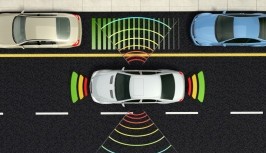Carmakers Alert: 2014 The Year of the Semi-Autonomous Car Platforms
on

Major car OEMs including General Motors, Nissan, and Toyota are all racing to develop their own, unique semi-autonomous architectures. Nissan this summer announced that its first cars using the autonomous car platform will arrive in 2020. Germany's Daimler AG similarly announced plans to start selling a self-driving car by 2020.
Self-driving cars are no longer just about Google cars. Carmakers aren't pontificating or debating the pros and cons of self-driving cars, either. Daimler is already using self-driving as a way to differentiate from other luxury cars, as it competes with its German rival BMW.
Just as much as car OEMs are under pressure to come up with their own autonomous car platforms, automotive chip suppliers such as Freescale, Infineon Technologies, and NXP Semiconductors are similarly feeling the heat.
The second half of 2014 is a sort of consensus deadline for leading car OEMs to make final decisions on architecture and technologies for semi-autonomous car platforms. By then, Freescale says, it will be working closely with OEMs, contributing its ideas and making proposals, hopeful for design wins for key technologies on the platform.
Carmakers are all "working toward" autonomous cars, agrees Drue Freeman, senior vice president for global automotive sales and marketing at NXP. "They are preparing roadmaps for self-driving cars."
But for now, the most visible competition among OEMs is the rollout of different sensor, camera, and radar technologies to enable ADAS (Advanced Driver Assistance Systems).
While different technologies help create a variety of ADAS features, ADAS, in essence, consists of two principles, Freescale claims. Initially a grid is created around a car to keep the car running within a lane. Second, the car position is communicated, relative to other cars and the road infrastructure.
Although it's easier to think of self-driving cars as essentially built on a combination of different ADAS features, such a view may be an oversimplification.
Hans Adlkofer, head of the system group at the automotive division at Infineon, explained that a variety of ADAS technologies, integrated in a vehicle, need to be able to run seamlessly on a single unit of underlying software adopted by each car company's platform.
In other words, ADAS features can't exist totally independent of the semi-autonomous car platform Although nobody believes that self-driving cars will be easy to develop, technology aside, the uncertainty of consumer behavior is a major concern among car OEMs. Car companies are responsible for developing a solid solution that can guarantee driver and passenger safety in semi-autonomous/self-driving cars.


Discussion (0 comments)